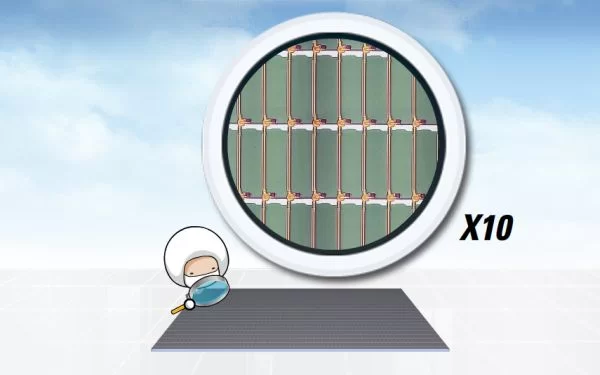Ever wondered how the TV and monitor displays you use every day work? The TFT-LCD manufacturing process consists of a set of processes for producing TFT, color filtering, cell, module and others. LG Display Newsroom gives a detailed, but easy to follow explanation of the entire steps below.
Close Look at the Thin Film Translator (TFT) Process
Let’s take a closer look at the production process for a TFT board, the bottom-most layer of an LCD panel. The image above depicts a TFT board, which consists of rows of small rectangular sections that together resembles a chessboard. Each rectangular section is a pixel, and each pixel contains a transistor that controls its function. The TFT process is the process that builds these transistors on top of a glass substrate.
So, what exactly is a transistor? Simply described, a transistor is a microscopic switch that controls the flow of electricity in the direction of liquid crystal and regulates the movement of the liquid crystal.
On top of a TFT board are millions of tiny transistors that are invisible to the naked eye, each of which are one hundredth of the thickness of a single strand of hair. If you examine the transistor up close, you would notice that it consists of several layers. Now, let’s see how each layer is produced, starting with the first layer.
After cleaning the glass substrate (Cleaning), it is coated with a layer of film, which is essential in creating the appropriate shape (Deposition). Then, a layer of light-sensitive material is spread out on top of this film (Photo-resist coating). Through these steps, we can create two layers, on which we can build parts of a transistor of various shapes and sizes as you can see in the picture above.
For more detail: TFT-LCD Production Process Explained

